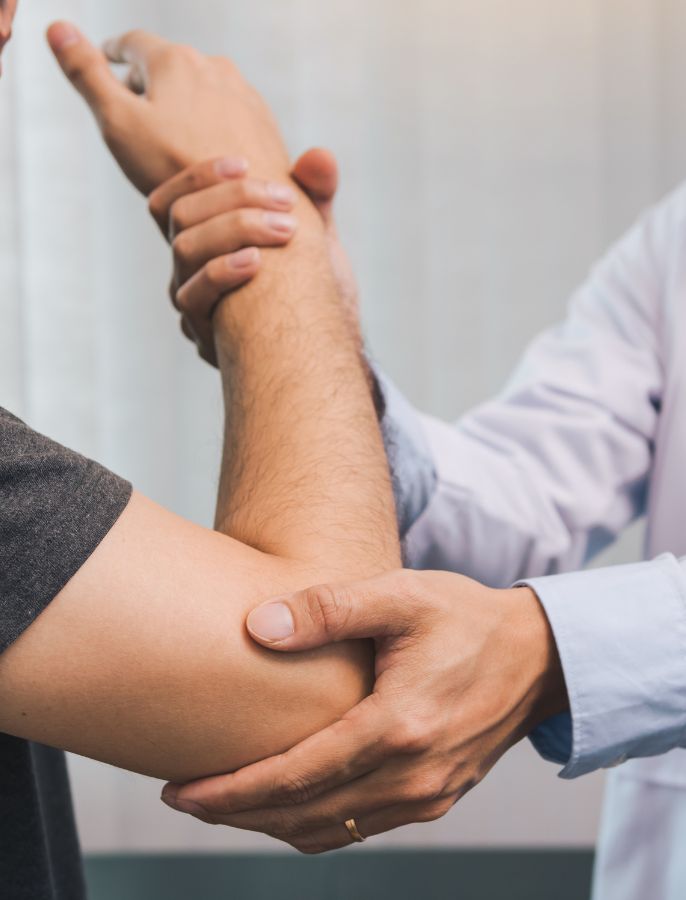Book Appointment Now
Affordable Orthopedic Surgeries in Latin America: Expert Care + Travel
Trusted orthopedic surgeons, modern clinics & complete care packages at 70% less than US prices
Looking for top-quality, affordable orthopedic surgery in Latin America? Explore leading medical tourism for joint replacement, including expert hip and knee surgery abroad. Our all-inclusive orthopedic medical travel packages deliver major savings with world-class surgeons and seamless, English-speaking support for your smooth recovery. Get expert care at a fraction of the cost!
Hospitals use modern equipment and FDA-approved materials, matching the standards found in the U.S. and Europe, but at much lower prices. English-speaking staff and organized travel support make the process simple.
Save money while receiving trusted orthopedic care in Latin America.
Orthopedic surgeries offer solutions for musculoskeletal conditions, helping you overcome chronic pain, regain movement, and live a more active lifestyle. These procedures normally require general anesthetic.
Why Choose Orthopedic Surgery in Latin America?
Are You a Candidate for Orthopedic Surgery?


Top Destinations for Orthopedic Medical Travel
Latin America is an increasingly popular medical travel destination, offering significant cost advantages alongside high-quality orthopedic care. Leading nations in this field include Costa Rica, known for its excellent healthcare standards, skilled orthopedic specialists, and serene recovery settings; Colombia, recognized for its advanced orthopedic surgery in JCI-accredited hospitals with highly trained experts; and Panama, providing access to modern medical facilities and specialized orthopedic treatments, often with the convenience of US dollar usage.
Orthopedic Surgery Cost Comparison
Compare the prices and see how much you can save
| Procedure | United States – national‑average price | Latin America – published self‑pay price | Estimated savings by going to Latin America |
|---|---|---|---|
| Total knee replacement | $32,600 average | $15,000 average | ≈ 54 % |
| Total hip replacement | $39,000 average | $9,000–$9,500 average | ≈ 76 % |
| ACL (knee‑ligament) reconstruction | $15,445 average | $6,600 average | ≈ 58 % |
| Lumbar spinal fusion (single level) | $44,000 average | $15,000–$20,000 average | ≈ 60 % |
What’s Included in our Orthopedic Surgery Packages?
Our orthopedic surgery package is designed for your complete peace of mind and focused recovery. It features seamless in-country private ground transportation, covering all airport transfers and travel to medical appointments. You’ll benefit from a dedicated in-country concierge service, providing personalized assistance and local guidance throughout your stay.
Your accommodation will be at a comfortable 4-star hotel, carefully chosen to ensure a restful environment optimal for healing. A thorough pre-operative consultation and orientation with our in-house doctor ensures you are fully informed and prepared. The orthopedic medical procedure itself will be performed by highly qualified specialists in a state-of-the-art, accredited facility, with standard surgical fees and associated costs included. To complete your secure experience, essential travel insurance is also part of your package, offering an added layer of protection.
Types of Orthopedic Surgeries We Offer
Joint Replacement Surgeries
Total Knee Replacement
Total knee replacement is a surgical procedure to resurface a knee damaged by arthritis or injury. It involves removing the damaged cartilage and bone from the surface of the knee joint and replacing them with metal and plastic components to restore function and reduce pain.
Hip Replacement
Hip replacement is a surgical procedure that replaces a damaged or arthritic hip joint with a prosthetic implant. This procedure is commonly performed to relieve pain and improve mobility in patients with severe arthritis or significant hip injuries.
Shoulder Replacement
Shoulder replacement is a procedure to replace the damaged parts of the shoulder joint with artificial components. This surgery is typically performed to alleviate pain and restore mobility in conditions such as osteoarthritis, rotator cuff tear arthropathy, and rheumatoid arthritis.
Arthroscopic Procedures
Knee Arthroscopy
Knee arthroscopy is a minimally invasive surgical procedure that uses a small camera (arthroscope) inserted through tiny incisions to diagnose and treat knee issues. Common conditions treated with knee arthroscopy include:
- Meniscal tears: Repairing or removing damaged meniscus tissue.
- ACL injuries: Reconstructing a torn anterior cruciate ligament.
- Cartilage damage: Smoothing or repairing damaged cartilage to restore joint function.
Shoulder Arthroscopy
Shoulder arthroscopy is a minimally invasive procedure that uses an arthroscope to diagnose and treat shoulder problems. It is commonly used for:
- Joint inflammation: Removing inflamed tissue or loose fragments within the shoulder joint.
- Rotator cuff tears: Repairing torn tendons in the shoulder.
- Swimmer’s shoulder: Relieving impingement caused by overuse or inflammation.
Reconstructive Procedures
ACL Reconstruction
ACL reconstruction is a surgical procedure to replace a torn anterior cruciate ligament, typically with a tendon graft. This surgery is common among athletes and aims to restore knee stability and function.
Ankle Ligament Reconstruction
Ankle ligament reconstruction is a surgical procedure to repair or replace damaged ligaments in the ankle, improving stability and reducing the risk of future injuries.
Specialized Procedures
Joint Fusion (Arthrodesis)
Joint fusion, or arthrodesis, is a surgical procedure that joins two bones in a joint permanently. It is often used as a salvage procedure for severe joint pain or instability, such as after failed knee replacements.
Trigger Finger Release
Trigger finger release is a surgical or minimally invasive procedure to treat stenosing tenosynovitis. It involves releasing the constricted tendon pulley to restore smooth finger movement and alleviate pain.
Client Reviews

General Schedule – Standard Package for Orthopedic Surgeries
- Pre-Travel Phase (4-6 weeks before):
- Initial virtual consultation with the international patient coordinator
- Medical records review by overseas surgical team
- Pre-operative testing in home country (blood work, EKG, etc.)
- Travel clearance from primary care physician
- Final virtual consultation with surgeon
- Travel and extended accommodation booking (6 weeks minimum)
- Airport pickup by patient coordinator
- Complete pre-operative testing and imaging
- Admission to hospital
- Post-operative monitoring
- Transfer to recovery accommodation
- Continued physical therapy (3-4 times per week)
- Travel readiness assessment
- Final medical clearance for air travel
- Transfer to airport with medical transport if needed
- Virtual check-ins with international surgical team
What to expect before, during, and after the Orthopedic surgery?
Before Surgery:
- Virtual consultations to evaluate your condition.
- Preparing mentally and physically with tailored advice.
During Surgery:
- The surgery is usually performed under general Anesthesia.
- Advanced techniques ensure minimal invasion and high precision.
- Expert anesthetists and surgeons prioritize your safety.
After Surgery:
- Personalized recovery plans, including physical therapy.
- Continued support from our medical team for optimal outcomes..
FAQs: Everything You Need to Know About Orthopedic Surgery
Medical tourism offers affordable and high-quality care for a range of orthopedic procedures, including:
- Joint replacements: Knee, hip, and shoulder replacements using cutting-edge techniques.
- Sports injury repair: ACL reconstruction, rotator cuff repair, and meniscus surgery.
- Spinal surgeries: Discectomy, spinal fusion, and treatment for scoliosis.
- Fracture and trauma care: Complex fracture repair and post-trauma reconstruction.
- Pediatric orthopedics: Treatments for congenital conditions like clubfoot and limb deformities.
- Hand and wrist surgeries: Carpal tunnel release, tendon repair, and arthritis treatment.
Medical tourism in Latin America offers:
- Cost savings of up to 70% compared to surgeries in Western countries.
- Access to advanced technology and experienced surgeons.
- Comprehensive care packages, including accommodation and transportation.
- Minimal waiting times compared to healthcare systems with long queues.
To select the right destination for orthopedic surgery, you must evaluate various factors.
- Accreditation of medical facilities (e.g., JCI accreditation).
- Surgeon expertise and patient reviews.
- Availability of advanced technology for your specific procedure.
- Support services like language interpreters and concierge care.
During your initial consultation, our specialists review your medical history, imaging results (e.g., X-rays or MRIs), and current health condition to determine your suitability for surgery.
- Share your medical records and imaging results with your doctor.
- Follow pre-surgery guidelines, including stopping certain medications and fasting if required.
- Arrange for comfortable recovery attire and assistive devices like crutches if needed.
Yes, we offer virtual consultations with orthopedic specialists to discuss your condition, treatment options, and estimated costs before you decide.
Depending on the procedure, general anesthesia (you are asleep) or regional anesthesia (numbing the surgical area) may be used. Your anesthetist will explain the best option for you.
Yes, many procedures, like arthroscopy and minimally invasive joint replacements, are available. These techniques result in smaller incisions, less pain, and faster recovery.
All partner hospitals adhere to stringent safety protocols and are equipped with state-of-the-art facilities to ensure patient safety. Each hospital is outfitted with fully equipped ICU units and specialized care teams to manage any unforeseen complications. Our surgeons and medical staff are extensively trained and experienced in handling complex cases, ensuring that any challenges during or after surgery are addressed promptly and effectively, providing you with the highest standard of care.
Our packages typically include:
- Rehabilitation sessions and medication. We provide a detailed breakdown to ensure transparency.
- Consultations and diagnostics, including MRI, X-rays, and lab work.
- Surgeon and hospital fees.
- Accommodation and transportation.
We prepare a packages tailored to your specific situation and preferences.
All partner hospitals adhere to stringent safety protocols and are equipped with state-of-the-art facilities to ensure patient safety. Each hospital is outfitted with fully equipped ICU units and specialized care teams to manage any unforeseen complications. Our surgeons and medical staff are extensively trained and experienced in handling complex cases, ensuring that any challenges during or after surgery are addressed promptly and effectively, providing you with the highest standard of care.
Some international health insurance policies cover medical tourism surgeries. Check with your provider, and we can assist with necessary documentation.
With proper care:
- Spinal surgeries can provide life-long relief if post-surgery guidelines are followed.
- Joint replacements can last 15-20 years.
- Sports injury repairs like ACL reconstruction often allow full return to activities within a year.
Patients can save 60–80% compared to US prices. A knee replacement may cost $9,000 in Latin America versus $35,000 in the US, often including care and accommodation.
Yes. All surgeons are board-certified, many with international experience. We screen all doctors to ensure safety and quality.
Yes. Many patients recover in relaxing destinations like Cartagena or San José. Packages include recovery stays in wellness-focused hotels or villas.
Packages include airport transfers, post-op care, English-speaking support, and optional nursing or physiotherapy add-ons.
Complete our free intake form, and our team will evaluate your case and provide personalized recommendations from our specialist network.
The information provided here within should not be construed in any way as medical guidance or advice. Please consult with your medical physical or health provider. Information provided is for informative purposes only and may not capture all pertinent laws, standards, and best practices. The medical field is continually evolving; information mentioned may be outdated and/or could undergo changes. The interpretations presented are not official. Some sections are based on the interpretations or views of relevant authorities, but we cannot ensure that these perspectives will be supported in all professional settings.











